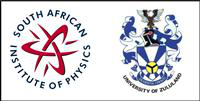Speaker
Main supervisor (name and email)<br>and his / her institution
N/A
Apply to be<br> considered for a student <br> award (Yes / No)?
No
Would you like to <br> submit a short paper <br> for the Conference <br> Proceedings (Yes / No)?
No
Level for award<br> (Hons, MSc, <br> PhD)?
N/A
Abstract content <br> (Max 300 words)
Embryonic stem cells as well as the recently discovered induced pluripotent stem cells play an exceptional role in the advancement of current therapies in tissue regeneration and/or engineering. However, to achieve repair as well as the eventual improvement in tissue functions following tissue engineering; different biocompatible materials must be combined with living cells. Among the many tested nanomaterials, graphene has been reported as one of the promising biocompatible scaffolds that promote cellular proliferation in various mammalian cells including human mesenchymal stem cells. In previous literature, the two most popular techniques, namely electroporation and liposome-mediated methods were the most frequently used techniques to transfect mouse embryonic stem (mES) cells. Nonetheless, mES cell transfection efficiencies of lower than 10 % were obtained using electroporation and chemical transfection may be cytotoxic. Contrarily, femtosecond laser pulses have been reported to allow mammalian cell plasma membrane permeability thereby allowing intracellular introduction of foreign genetic species into both multipotent and pluripotent stem cells. As a result, a “chemical-free” cell transfection procedure that utilises micro-litre scale volumes of reagents was established. In this work we report for the first time transient and non-invasive photo-transfection of the ES-E14TG2a pluripotent cells on graphene coated substrates. Our results showed significant increase in the photo-transfection efficiency of mES cells plated on graphene.

